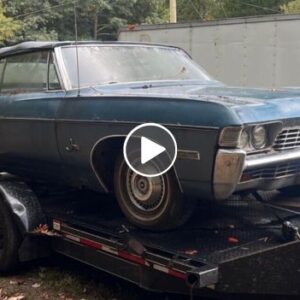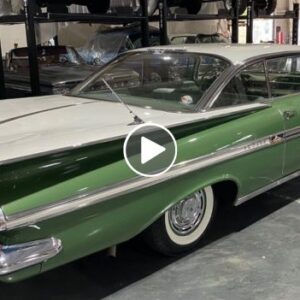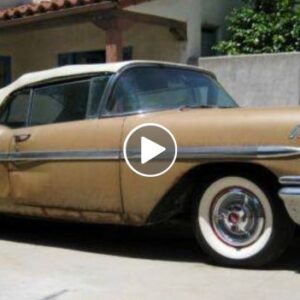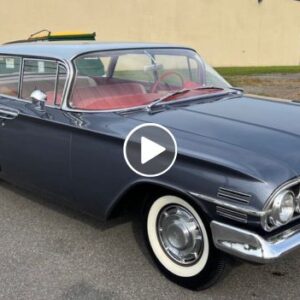The 1946 Chevy Truck holds a special place in the hearts of classic truck enthusiasts. As a post-WWII vehicle, it represents a significant time in American automotive history. This article will delve into the history, design, and legacy of the 1946 Chevy Truck, providing valuable insights to collectors and fans alike.
-1687160869.jpg)
1. History of the 1946 Chevy Truck
The 1946 Chevrolet Truck emerged in the post-World War II era, when American automobile manufacturers were transitioning back to civilian production. After years of producing military vehicles for the war effort, Chevrolet released the 1946 Chevy Truck as part of the Advance-Design series. This marked the beginning of a new era for Chevrolet trucks, characterized by a focus on comfort, safety, and style.
2. Design and Features of the 1946 Chevy Truck
The 1946 Chevy Truck was part of the Chevrolet Advance-Design series, which was produced from 1947 to 1955. However, the design elements of the 1946 model were similar to those of the later models in the series. Here is a detailed description of the design of the 1946 Chevy Truck:
Exterior Design
The 1946 Chevy Truck had a distinctive and bold appearance with a large, chrome-accented grille at the front. The grille featured horizontal bars with the Chevrolet emblem in the center. The truck had rounded fenders and a rounded hood, giving it a smooth and streamlined look for the time,
-1687160923.jpg)
The headlights were integrated into the front fenders, and they featured a simple and practical design. The truck had a two-door cabin design with large windows for better visibility. The cargo bed at the rear had a simple and utilitarian design with wooden planks as the bed floor.
Body Styles
The 1946 Chevy Truck was available in various body styles, including a half-ton pickup, three-quarter ton pickup, and one-ton pickup. The half-ton and three-quarter ton pickups featured a regular cab design with a single bench seat, while the one-ton pickup had an extended cab with seating for three people.
Interior Design
The interior of the 1946 Chevy Truck had a functional and straightforward design. The dashboard featured a simple layout with gauges and controls for essential functions like speedometer, fuel level, temperature, and oil pressure. The seating was utilitarian, typically upholstered in vinyl or cloth, providing basic comfort for the driver and passengers. The cabin had minimal amenities, reflecting the design philosophy of the time.
-1687160938.jpg)
Colors and Finishes
The exterior of the 1946 Chevy Truck was available in various colors, including shades of blue, green, brown, and red. The finish was typically a single-tone paint scheme, and chrome accents were limited primarily to the front grille.
-1687160952x1024.jpg)
Overall, the 1946 Chevy Truck had a sturdy and functional design, reflecting the post-war era’s focus on practicality and utility. It was a popular choice for farmers, small businesses, and individuals in need of a reliable workhorse for transportation and hauling.
3. Engine
The 1946 Chevy Truck was equipped with a six-cylinder inline engine. Specifically, it featured Chevrolet’s “Stovebolt” engine, which was a reliable and durable powerplant used in various Chevy models during that time period. Here are some details about the engine:
Engine Type: Inline-6
Displacement: The engine had a displacement of 216.5 cubic inches or approximately 3.5 liters.
-1687160981x1024.jpg)
Fuel System: The fuel system employed a carburetor to mix fuel and air for combustion.
Compression Ratio: The compression ratio was approximately 6.5:1, which was relatively low to accommodate the use of lower-octane fuels available at the time.
Torque: The torque output was around 174 lb-ft, providing sufficient low-end power for hauling and towing.
Cooling: The engine utilized a liquid cooling system with a radiator and a water pump to maintain proper temperature levels.
Ignition: The ignition system was based on a distributor, which distributed the spark to each cylinder at the appropriate time.
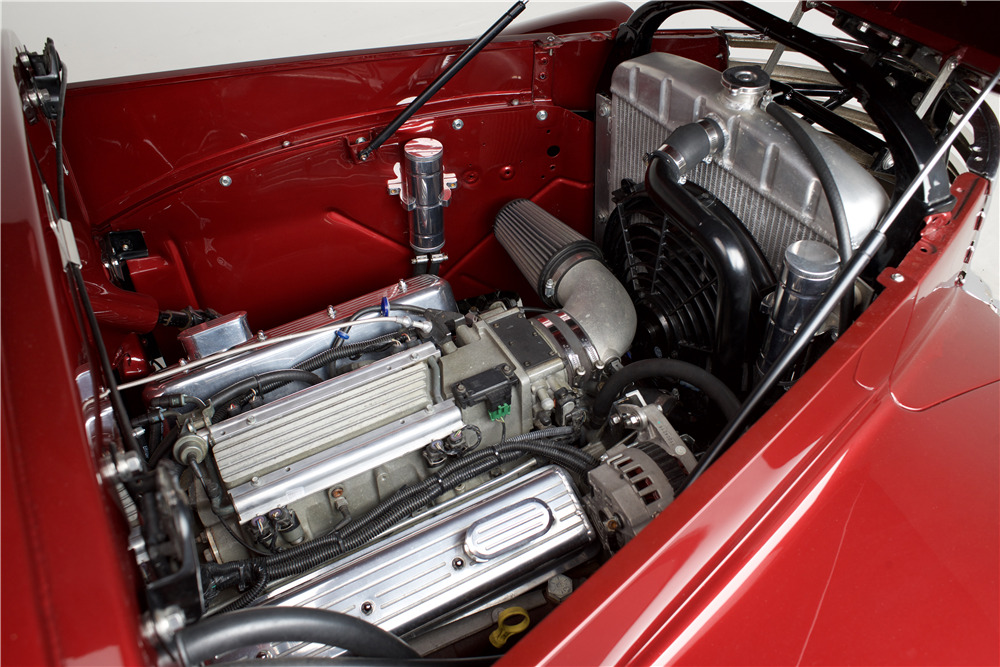
Transmission Compatibility: The engine was typically paired with a three-speed manual transmission or a four-speed manual transmission, depending on the specific model and configuration.
The “Stovebolt” engine was known for its robustness and longevity, making it a popular choice for Chevrolet trucks of that era. While it may not have been the most powerful engine, it provided dependable performance for the truck’s intended work and hauling purposes.
4. Performance
The performance of the 1946 Chevy Truck was characterized by its durability, reliability, and suitability for work and hauling purposes, rather than speed or high-performance capabilities. Here are some key aspects of its performance:
Power and Towing Capacity
The six-cylinder inline engine in the 1946 Chevy Truck produced approximately 90 horsepower and around 174 lb-ft of torque. While these power figures may seem modest by today’s standards, they were sufficient for the truck’s intended tasks, such as transportation and light to moderate hauling. The towing capacity would depend on the specific model and configuration but was generally within a range suitable for small to medium-sized loads.
Payload Capacity
The truck’s payload capacity, which is the maximum weight it could carry in the cargo bed, also varied depending on the specific model and configuration. The half-ton pickup model had a payload capacity of around 1,000 to 1,500 pounds, while the three-quarter ton and one-ton models could handle heavier loads.
Handling and Suspension
The 1946 Chevy Truck featured a solid axle suspension system, providing stability and durability for rougher terrains and heavy loads. However, the ride quality could be somewhat stiff due to the truck’s utilitarian design. Steering was typically manual and required more effort compared to modern power steering systems.
Speed and Acceleration
The top speed of the 1946 Chevy Truck was generally in the range of 50 to 60 miles per hour (80 to 96 kilometers per hour). Acceleration was modest due to the engine’s power output and the truck’s weight. It’s important to note that trucks of this era were not designed for high-speed performance but rather for reliable and efficient transportation of goods.
-1687161099x1024.jpg)
Fuel Efficiency
Fuel efficiency was relatively modest, as the technology and design of the time did not prioritize maximizing fuel economy. The truck’s fuel consumption would vary depending on driving conditions, load, and driving habits, but it typically averaged around 10 to 15 miles per gallon (4.2 to 6.4 kilometers per liter).
The 1946 Chevy Truck offered dependable performance suitable for work and transportation needs, particularly in rural and industrial settings. Its emphasis was on durability and reliability rather than high-speed or sporty performance, making it a trusted workhorse for its time.
5. Sales and Production
Exact sales and production numbers for the 1946 Chevy Truck can be difficult to determine due to limited data and the unique circumstances surrounding its release. However, it is clear that the 1946 Chevrolet Truck was positively received by the market, despite several challenges that impacted production.
Production Challenges
The production of the 1946 Chevy Truck faced several obstacles. The most significant challenge was the shift from wartime to peacetime production. With World War II ending in 1945, American automobile manufacturers were transitioning from producing military vehicles to resuming civilian vehicle production. This change meant retooling factories and sourcing materials that were in short supply due to wartime restrictions.
Additionally, labor strikes in the automotive industry during 1945 and 1946 further limited production capabilities. These strikes, which affected several major manufacturers including Chevrolet, resulted in temporary shutdowns and a decrease in the number of vehicles produced.
Estimated Production Numbers
Despite these challenges, the 1946 Chevy Truck was produced in substantial numbers, given the circumstances. Some sources estimate that Chevrolet produced approximately 33,000 trucks in 1946, including half-ton, three-quarter-ton, one-ton, panel trucks, and Suburbans. It’s essential to note that these figures are approximate and may vary depending on the source.
-1687161135x1024.jpg)
As production ramped up in subsequent years, Chevrolet continued to refine the Advance-Design series, which included the 1946 model. Throughout the late 1940s and early 1950s, Chevrolet consistently outsold its competitors in the truck market, further establishing the popularity and success of their truck line.
6. Market Reception of the 1946 Chevy Truck
The 1946 Chevy Truck was well-received by the market, thanks to its combination of style, functionality, and comfort. Although production numbers were limited due to material shortages and labor strikes, the demand for the truck remained strong, as it offered an appealing option for both commercial and private buyers.
Commercial Use
The 1946 Chevrolet Truck was particularly popular among businesses, as it provided a reliable and stylish means of transporting goods and services. The panel truck variant, with its fully enclosed cargo area, was especially popular for delivering goods and serving as a mobile workspace for various industries. The Suburban model also found success as a versatile work vehicle with ample seating and cargo capacity.
Private Use
For private buyers, the 1946 Chevy Truck offered a comfortable and capable vehicle that was well-suited for a range of tasks, from farming to construction. Its improved cabin design, including the wider bench seat and increased headroom, made it more appealing for daily use compared to previous models. The truck’s stylish design and attention to detail also made it a popular choice for those who valued aesthetics in their vehicles.
Post-War Demand
The market reception of the 1946 Chevrolet Truck was further bolstered by the pent-up demand for new vehicles following World War II. As automobile production shifted from military to civilian vehicles, there was a significant need for new trucks to replace aging pre-war models and support the expanding post-war economy. The 1946 Chevy Truck met this demand with an updated, modern design that appealed to both commercial and private buyers.
7. Legacy of the 1946 Chevy Truck
The 1946 Chevy Truck is a quintessential example of American automotive history and a beloved classic among collectors. Its unique combination of style, power, and comfort make it a sought-after vehicle for restoration projects and vintage truck shows. The 1946 Chevrolet Truck’s influence can be seen in subsequent generations of Chevy trucks, as well as in the broader context of American automotive design.
-1687161205.jpg)
In conclusion, the 1946 Chevy Truck is a timeless treasure that continues to captivate automotive enthusiasts more than seven decades after its debut. Its lasting impact on the industry and its appeal among collectors make it a must-know vehicle for anyone interested in classic trucks or American automotive history.
